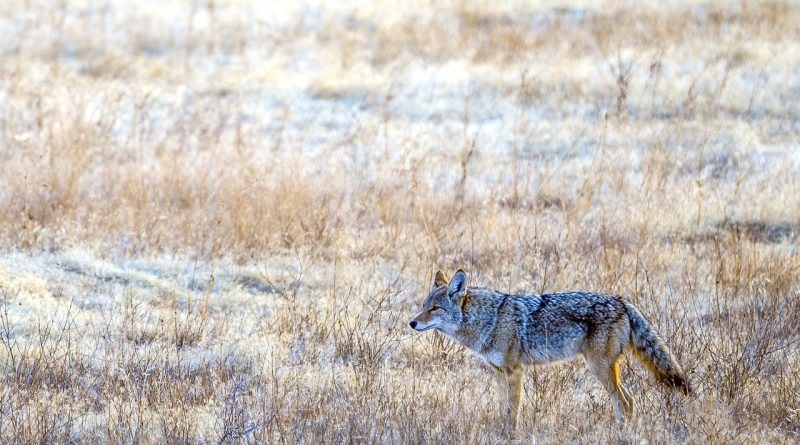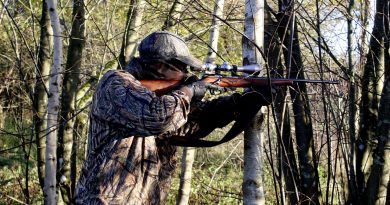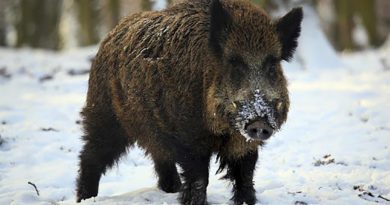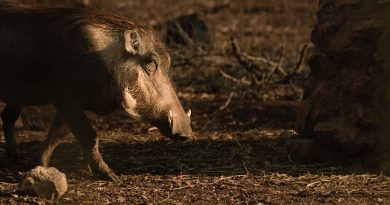How to Hunt Coyotes at Night
Hunting coyotes is backed by law across several states in the US. These dogs could be a nuisance to farmers and landowners, making them ideal targets for hunters.
Just as you’ll expect, coyotes are easier to down at night than during the day. The ease of hunting coyotes when it’s dark stems from their poor line of sight when its nighttime.
But what happens when you don’t have the necessary skills and gear to make the hunt successful? Chances are the coyotes could make a run for it when they see you coming.
That’s why this guide provides essential tips on how to get coyotes when the sun goes down. With all the info this post provides, making more from your coyote-hunting experience is more comfortable.
And when you follow what’s in this post, you’ll be able to down multiple coyotes under cover of darkness, hassle-free!
Calling Coyotes at Night
As you should already know, sounds are more audible at night than when it’s daytime. If you’re keen on projecting your calls through a larger area, nighttime’s the best time to do it.
How Loud, or How Low?
When you’re hunting with a coyote caller, it’s better to play your sounds at the right volume. Playing these sounds at an ideal volume helps you can achieve a more realistic effect, drawing more coyotes in.
Most coyotes tend to be vocal when it’s dark, so they’ll likely call back to your tune.
When you play the distress sounds, consider moving towards where your game animal’s calling. Playing high-pitched audio as you progress helps you get closer to your coyote, giving you a better shot.
But here’s a mistake most newbie coyote hunters make – calling too low.
Most beginners to the coyote-hunting theater call lower for fear of their game making a run for it. If you want your game to break cover and approach your calling position, moderate calls are perfect.
Leverage the calm nature of nighttime and most coyotes will hear your call from several hundred yards out.
What Kind of Call?
I’ve heard some newcomers to coyote hunting say “I used all kinds of calls but didn’t get any coyotes last night”. In some situations, coyotes are used to whatever sound you blast their way, and it’s more evident in overhunted spots.
For instance, an educated coyote is less likely to approach your position when you use ‘hurt coyote’ sounds first.
One calling trick experts advise is to use howling sounds and noise from animals coyotes feed on. Playing duck, turkey, rabbit, and other calling sounds seems to be more effective in often-hunted areas.
Coyotes usually tread really slow at night, making it rather tricky for you to locate them, except with advanced equipment. And when you’ve got to hunt coyotes at night, three types of gear usually come to mind.
Another jackpot calling sound is to imitate distressed young coyotes; but only when you spot females in the group. And if you’ve successfully downed a coyote without others noticing, distress sounds could work.
Keep calling, or wait after one call?
Coyotes, even the dumb ones, will spot your plot when you make multiple calls without waiting. In some cases, it could take several minutes before a coyote decides to approach open spaces towards your call.
Consider playing a call and wait for some time before trying another. While you’re doing this it’s best to station yourself in an area that affords you greater visibility.
Lights, Thermal, or Night Vision?
Lights (H3)
Regular lights, particularly LEDs are ideal for hunting coyotes. If you plan to scan your environment the proper way, these lights come in handy.
Pros
- Ideal for drawing unsuspecting coyotes into your line of fire
- Different colors available
- May have a higher attraction effect than calling sounds in some areas
Cons
- Could scare off educated coyotes
- Not the best for maintaining your stealth if coyotes refuse to come towards it
Thermal
Thermal has several advantages over regular lights. But as expected, it could fall short in some quarters.
Pros
- Can see coyotes hundreds of yards off
- Comes with ideal design for easier fitting on rifle scopes
- Requires little to no experience to set up
Cons
- Doesn’t see through glass
- May be too expensive
Night Vision
If you plan to get a better line of sight through dark spots, night vision is an ideal choice.
Pros
- Can spot movement through glass
- Budget options available
- Ideal for scanning wide fields
Cons
- Expensive
- Requires a high-focus IR scan beam to produce quality images
Tips For Using Predator Hunting Lights
Here’s some tips to help you get more from your predator hunting lights:
Scan quicker, instead of slower – aim to see eyes when you’re scanning before looking for the whole animal.
Use halos to follow your scan results – when you’ve spotted a coyote, don’t point your LED beam directly to its eyes, it could run off. With the halo effect, you can get closer to your target coyote for a more precise shot.
Distance – your shots with a hunting light shouldn’t be farther than 140 yards if you’re not a pro. Any distance greater than that could be challenging for your visibility.
Final Word
Knowing how to hunt coyotes when it’s dark involves three P’s – practice, preparation, and patience. When you’ve tried on your first night without success, it doesn’t mean you didn’t prepare the right way.
Most coyotes in heavily-hunted areas know several of your techniques in advance, so be dynamic in your approach. Some of these dogs will test your grit, so take the challenge head-on.
Remember, no info is wasted when you’re in the hunting game.
Essential pieces of information from people who’ve hunted the area or locals could come in handy. Fashion your approach based on what you’ve gathered through your investigation. It helps you get more shoulder shots squeezed, and more coyotes down.
Hunting coyotes at night increases your success rate. You’ll have them in your crosshairs with the right gear, and they won’t be able to spot you. And when you’ve done your scouting right, you’re not going to wait long before taking your first shot.
Leverage the tips above, and you’ll be packing coyotes onto your killing list in no time!




